The American Institute of Architects (AIA) Committee on the Environment (COTE) is awarding 10 design projects with its highest honor—the AIA COTE Top Ten Awards—for their significant achievements in holistic sustainability and advancing climate action and equity.
The COTE Top Ten Awards celebrate design projects that have expertly integrated design excellence with innovative performance in ten key areas. The projects illustrate the solutions architects provide for the health and welfare of our communities and planet.
To be eligible, project submissions are required to demonstrate alignment with COTE’s rigorous criteria, which include social, economic, and ecological values. The four-member jury evaluates each project submission based on the effectiveness of their holistic design solution and metrics associated with the ten principles of AIA’s Framework for Design Excellence.
On the the 2023 COTE Top Ten Awards jury:
- Katie Ackerly, AIA, Chair, David Baker, Oakland, Calif.
- Julian Owens, Assoc. AIA, Jacobs, Arlington, Va.
- Seonhee Kim, AIA, Design Collective, Baltimore
- Avinash Rajagopal, Metropolis, New York
The 2023 COTE Top Ten Awards winners are (project descriptions and images courtesy AIA):
Casa Adelante 2060 Folsom, San Francisco | Mithun with Y.A. Studio
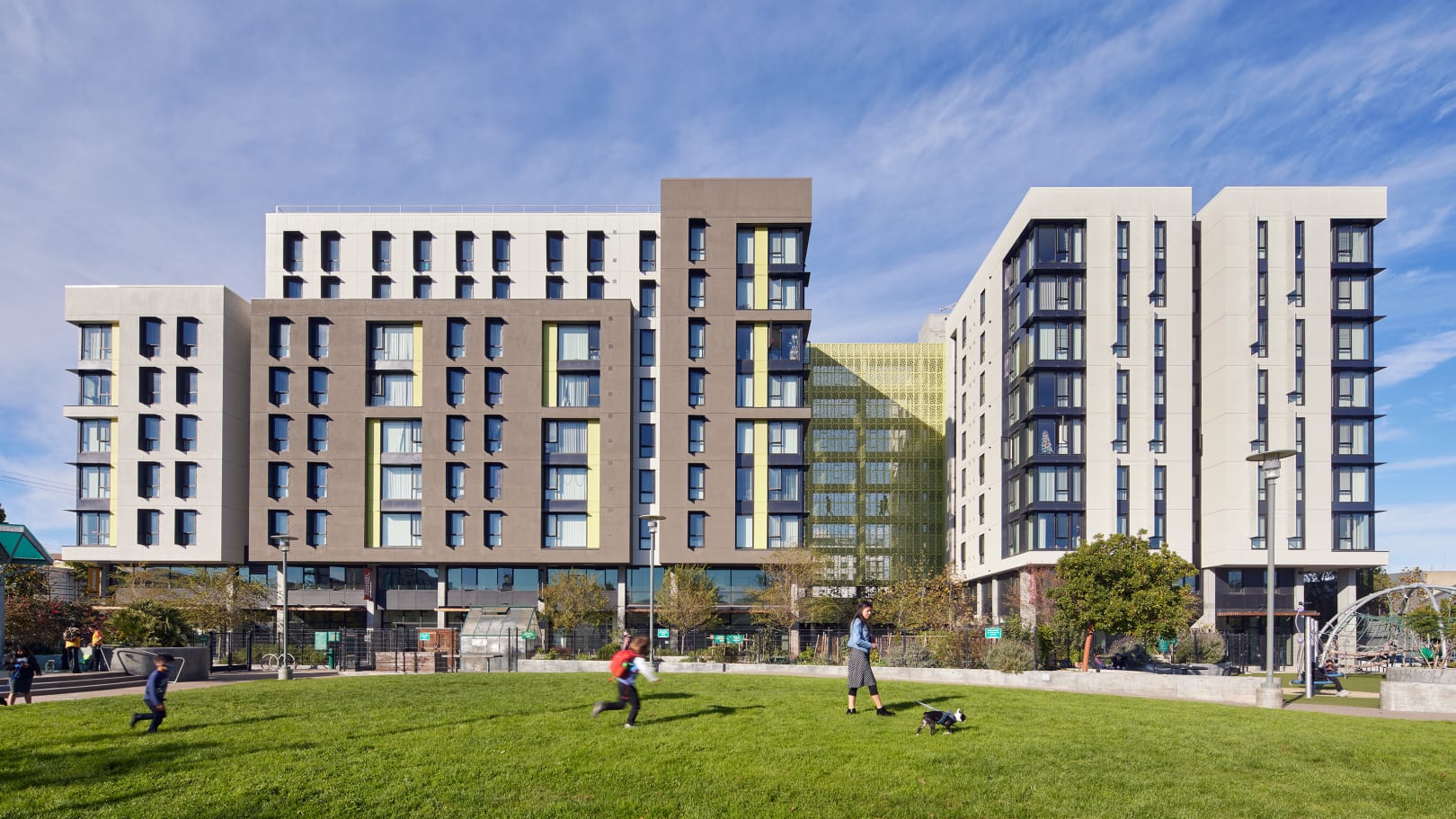
In San Francisco’s Mission District, where 47% of the city’s households are housing-cost burdened, Casa Adelante provides 127 households with permanently affordable housing at no more than one-third of their income. The project takes advantage of its walkable and transit-rich site to bolster social equity and strive for a low-carbon future. Through its massing, the project increases the south-facing perimeter to create the most housing and provides compelling park views for the majority of the building’s units. The team also reimagined a narrow fire easement between the site and the adjacent park to create a pedestrian paseo that delivers much-needed public outdoor space and a permeable area that boosts stormwater management and the region’s biohabitat. Read more on this project. Photo: Bruce Damonte
Confluence Park, San Antonio | Lake|Flato Architects + Matsys
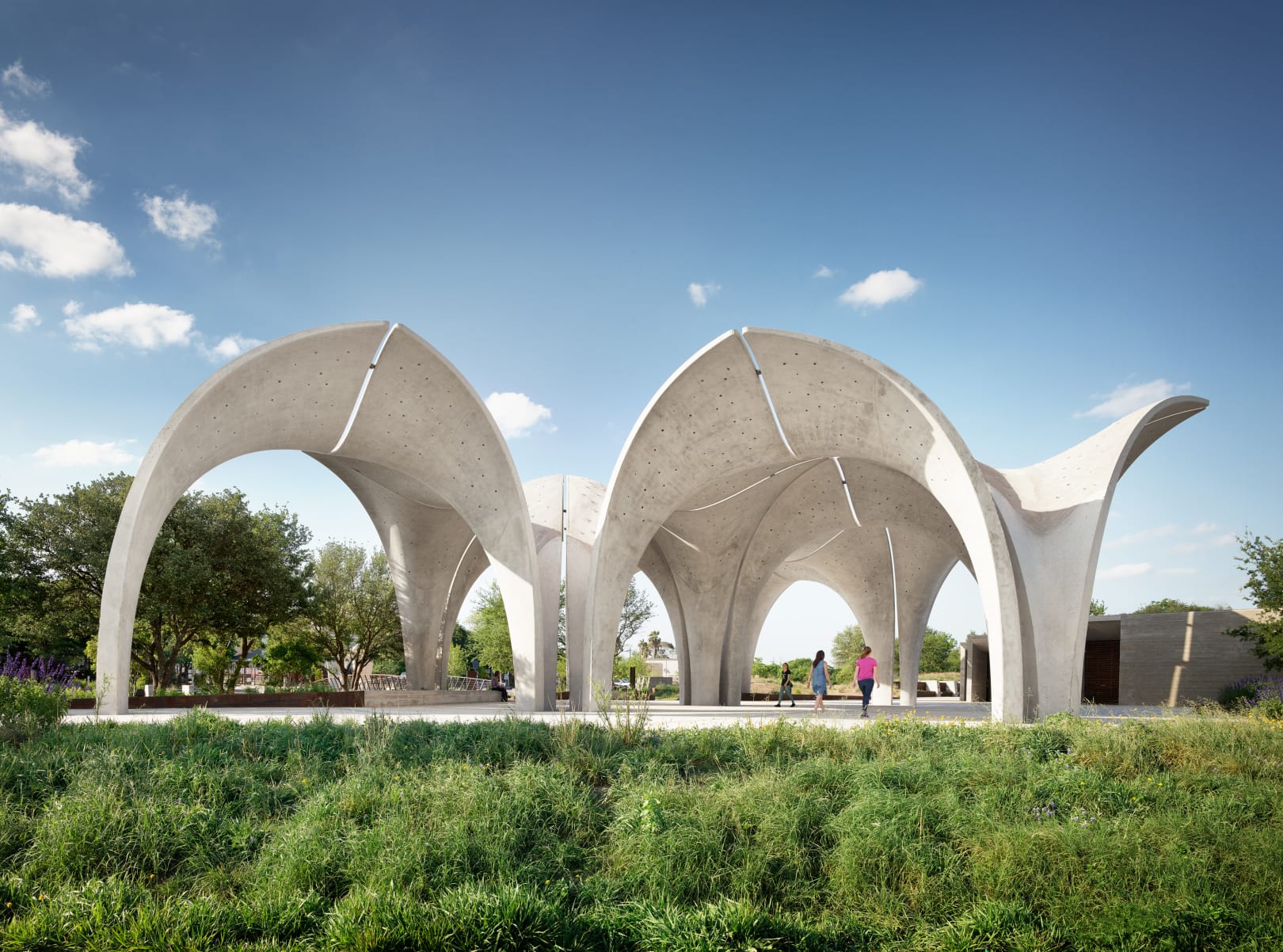
Along the bank of the San Antonio River, Confluence Park is a living laboratory designed to broaden visitors’ understanding of south Texas ecotypes and the impact of urban development on local watersheds. A destination for learning and recreation, the park is part of the country’s largest environmental restoration project and an accessible gateway to outdoor activity. The design reflects the idea of confluence—the park is situated at the junction of the San Antonio River and San Pedro Creek. Grand gestures such as the park’s shaped lands represent the convergence of ecotypes, while the central pavilion’s concrete petal structures draw inspiration from plants that funnel rainwater to their roots. Read more on this project. Photo: Casey Dunn
DPR Sacramento Zero Net Energy Office, Sacramento | SmithGroup
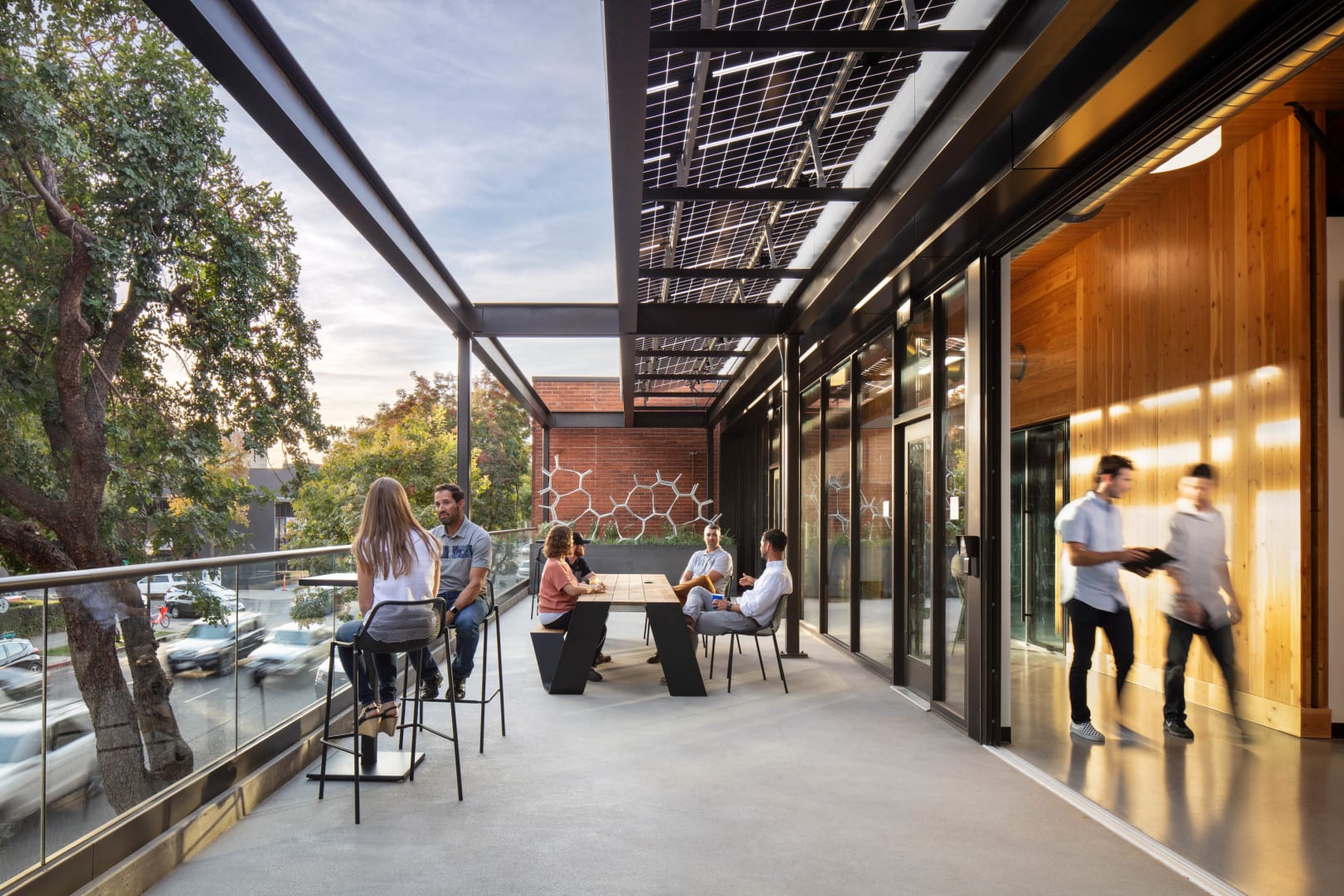
For its new headquarters in Sacramento, DPR Construction envisioned a sustainable work environment that would foster a greater sense of collaboration among its employees and would have strong ties to both nature and the surrounding community. The net zero energy project includes the renovation of an almost 27,000-square-foot building originally constructed in 1940 and a 5,600-square-foot addition built entirely with cross-laminated timber. As a compelling new addition to “The City of Trees,” the office is filled with biophilic design elements, a highlight of which is a seed wall that upends the concept of a living wall. It contains dormant seeds instead of live plants, including a selection of native grassland species that are vital to more than 90% of California’s wildlife. Read more on this project. Photo: © Chad Davies
Harvard University Science and Engineering Complex, Boston | Behnisch Architekten
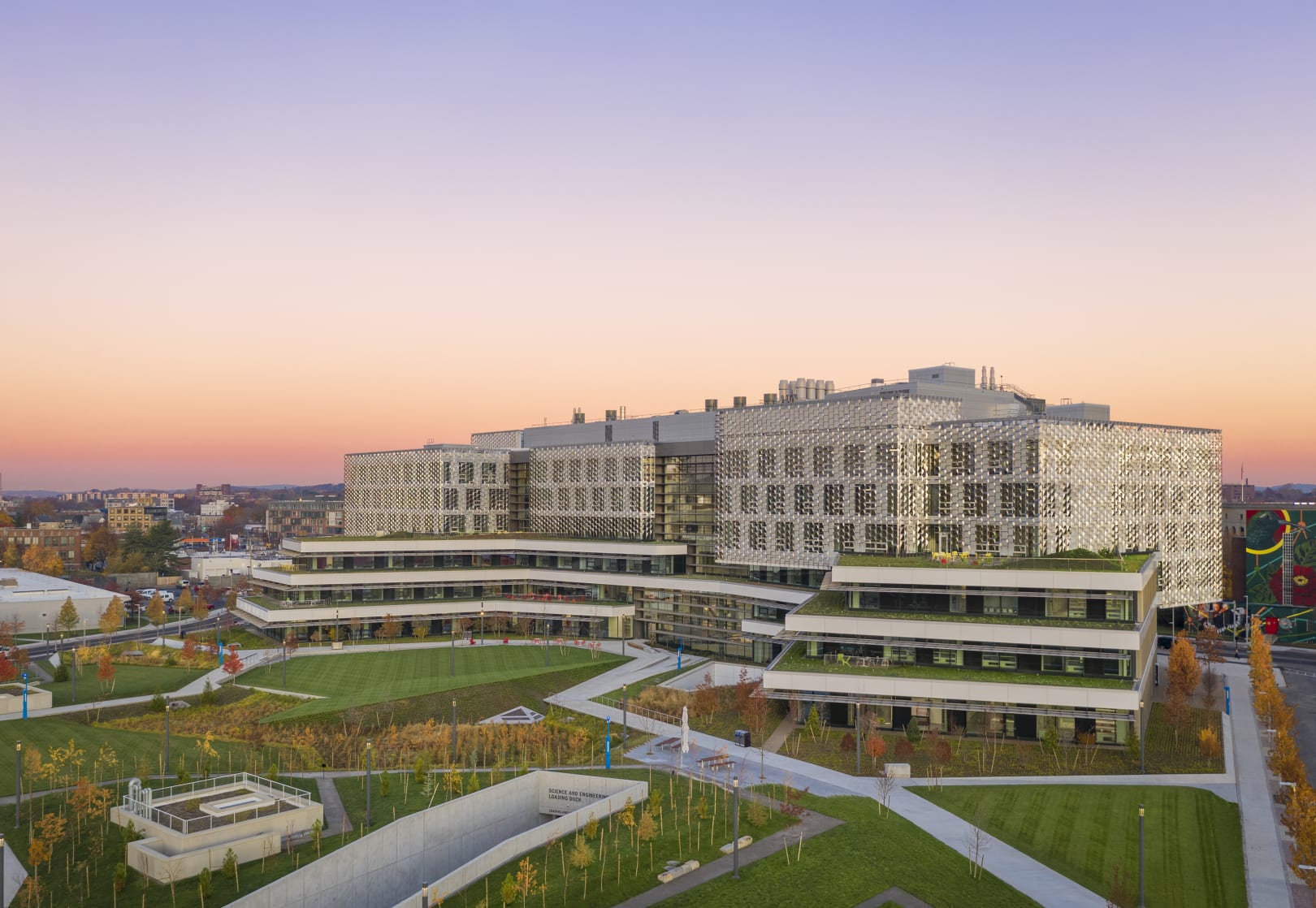
Among the healthiest and most energy-efficient laboratory buildings in the world, Harvard’s Science and Engineering Complex (SEC) helps shift the typology toward environmental stewardship. It sets a new standard for Harvard and highlights its mission to shape a more sustainable university community and planet. Designed to reflect the leading research taking place inside, the complex also connects users to one another in the spirit of collaboration. It was built just over the bridge from Harvard’s Cambridge campus in Lower Allston, one of 23 neighborhoods that make up the City of Boston. The goal was to create a new sustainably built home for the Harvard John A. Paulson School of Engineering and Applied Sciences (SEAS) where a robust culture of collaboration and interdisciplinary work could be fostered. The SEC site is also a connector that links the neighborhood and Boston’s park system. Read more on this project. Photo: Brad Feinknopf
John W. Olver Transit Center, Greenfield, Mass. | Charles Rose Architects
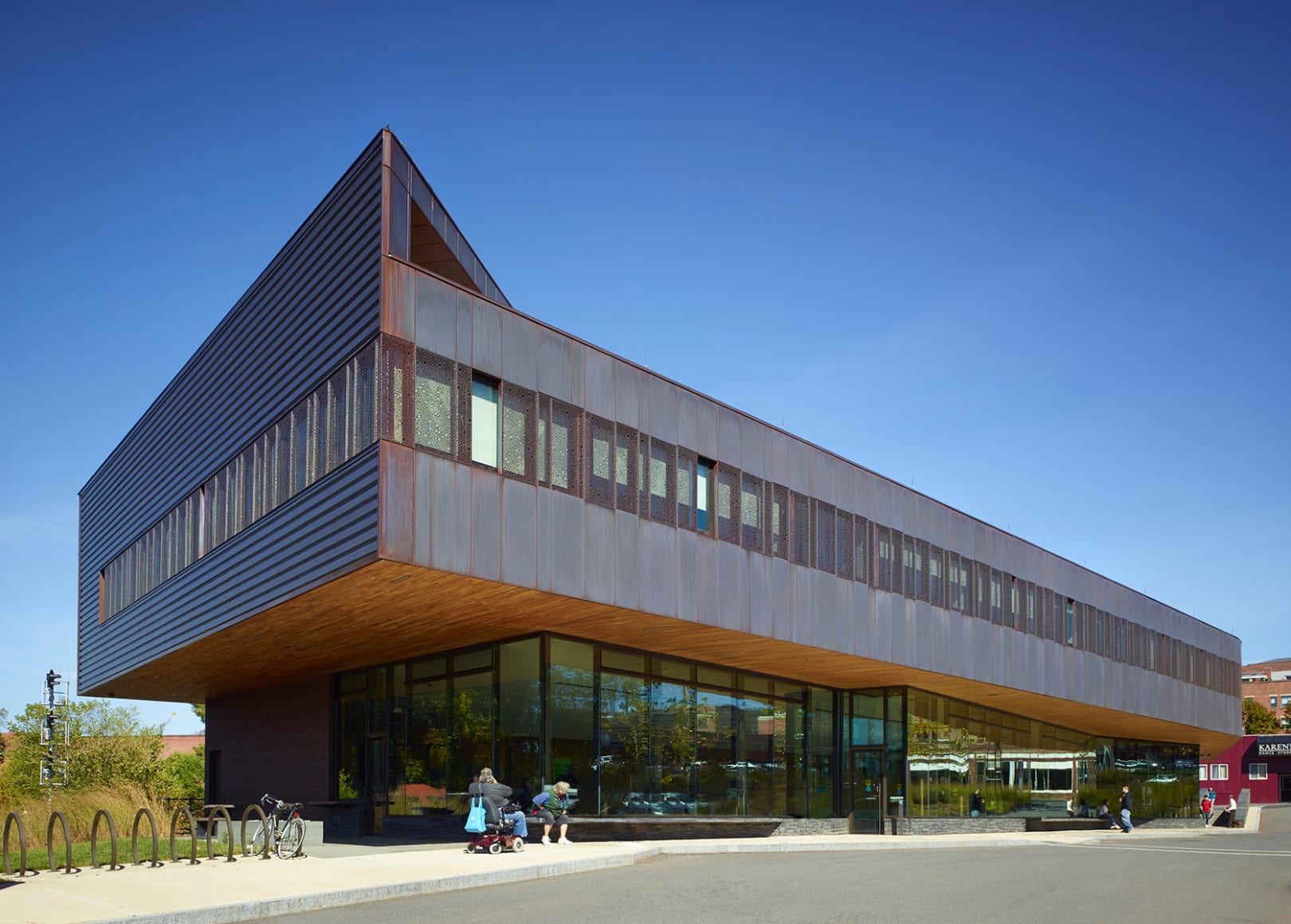
The first net zero energy transit center constructed in the United States, the John W. Olver Transit Center is a vital intermodal hub that has introduced high-performance design to Massachusetts. The project, a depot for bus lines, Amtrak, and an office for the county’s government, is testament to Franklin County’s commitment to sustainability and ethical design. Shaped by a continuous process of community engagement, the center’s design pays homage to the city of Greenfield’s past, relying on dark brick, copper, and locally sourced stone that allow it to slip seamlessly into the city’s stately downtown district. The center forges a new paradigm for historically energy-dependent structures of its kind and, in doing so, has generated positive economic impact while spurring sustainable urban revitalization. Read more on this project. Photo: John Edward Linden Photography
RIDC Mill 19: Buildings A & B, Pittsburgh | MSR Design
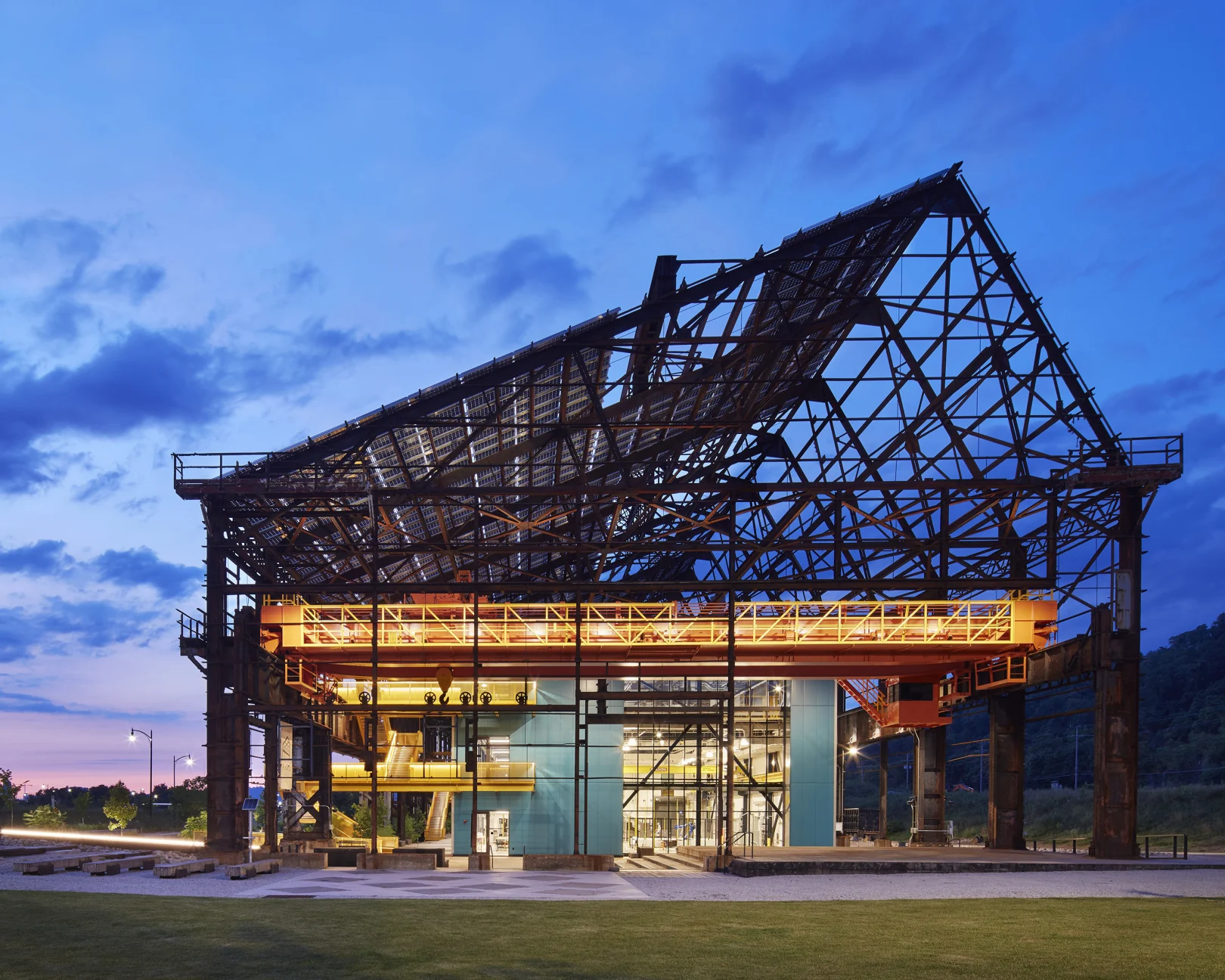
A vital new addition to Pittsburgh’s post-industrial landscape, Mill 19 is a bold transformation of a former steel mill that now welcomes the sustainable future of advanced manufacturing. Within the decommissioned mill’s steel superstructure, multi-tenant, tech-focused buildings create tension between old and new, while the country’s largest single-slope bifacial glass photovoltaic array crowns the project. In addition to accelerating the city’s future, Mill 19 is a potent catalyst for the development of Hazelwood Green, Pittsburgh’s largest riverfront redevelopment project, which is being built on its final large-scale brownfield site. Read more on this project. Photo: Corey Gaffer
Science and Environmental Center, Hillsborough, Calif. | Leddy Maytum Stacy Architects
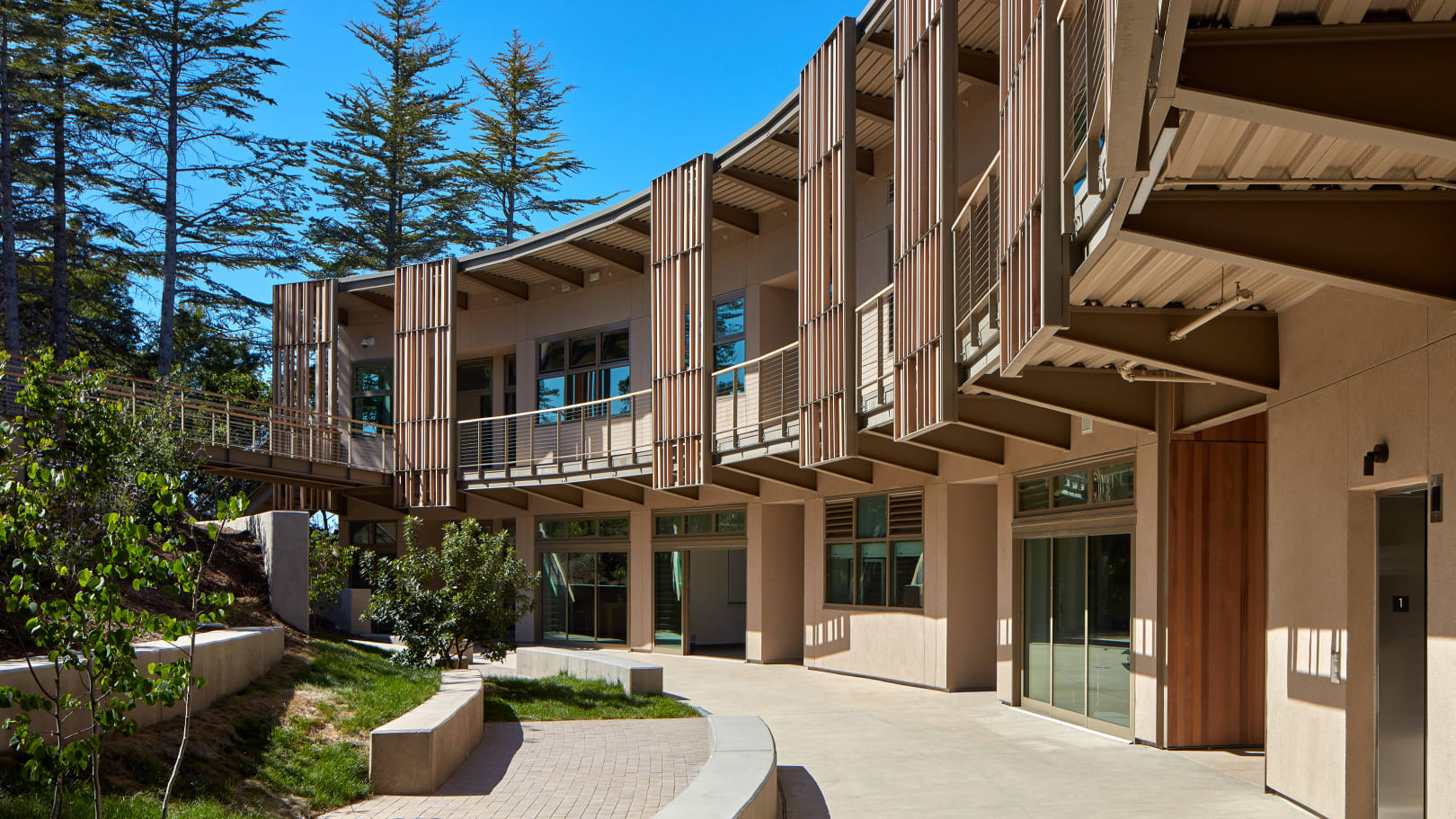
The new net zero carbon Science and Environmental Center is the embodiment of The Nueva School’s mission to spark a passion for lifelong learning and foster social acuity and environmental citizenship in the imaginative young minds of its students. The center supports the independent school’s evolving mission that is rooted in sustainability and environmental stewardship as a central tenet of student education. It houses the school’s environmental citizenship program that features eight science labs and associated support spaces that welcome all grades to explore the important connections between humans and the natural environment. Indoor and outdoor learning spaces are linked to shape an “ecology of learning” wherein students practice sustainability, conduct environmental and social studies, and collaboratively explore potential solutions to a broad range of environmental challenges. Read more on this project. Photo: ©richardbarnes
UC San Diego North Torrey Pines Living & Learning Neighborhood, San Diego | HKS, Inc & Safdie Rabines Architects
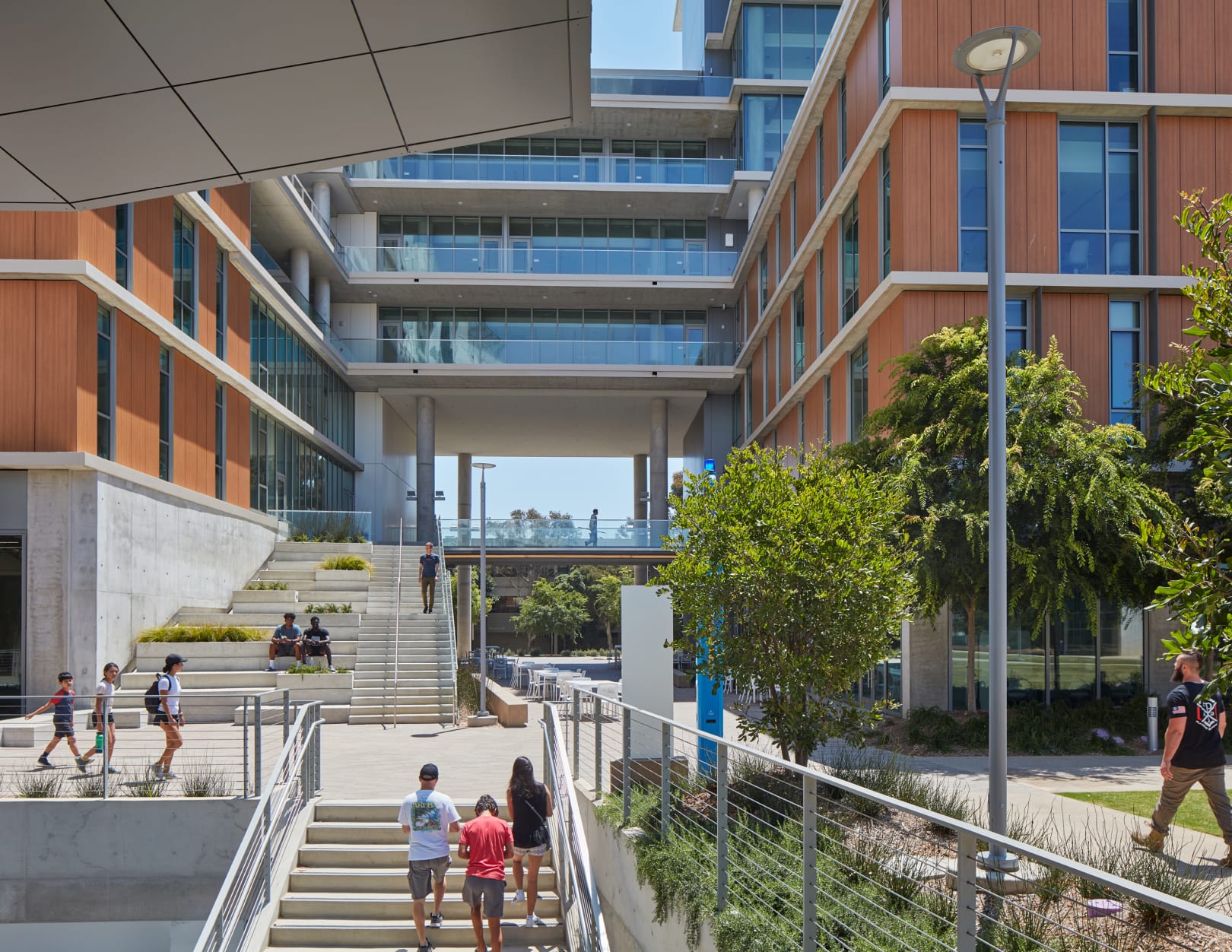
The largest project in the University of California, San Diego’s history, the North Torrey Pines Living and Learning Neighborhood reflects the school’s reputation as a longtime leaders in climate change research and education and its quest to be carbon neutral by 2025. The neighborhood is a mix of three residence halls, two academic buildings, eight general assignment classrooms, offices, parking, and public amenities that work in concert to foster iterative improvement and innovation among the next generation of environmental stewards. Conceived through evidence-based design, it is the most substantial project in the higher education sector to receive LEED Platinum certification. Read more on this project. Photo: Tom Harris
Watershed, Seattle | Weber Thompson
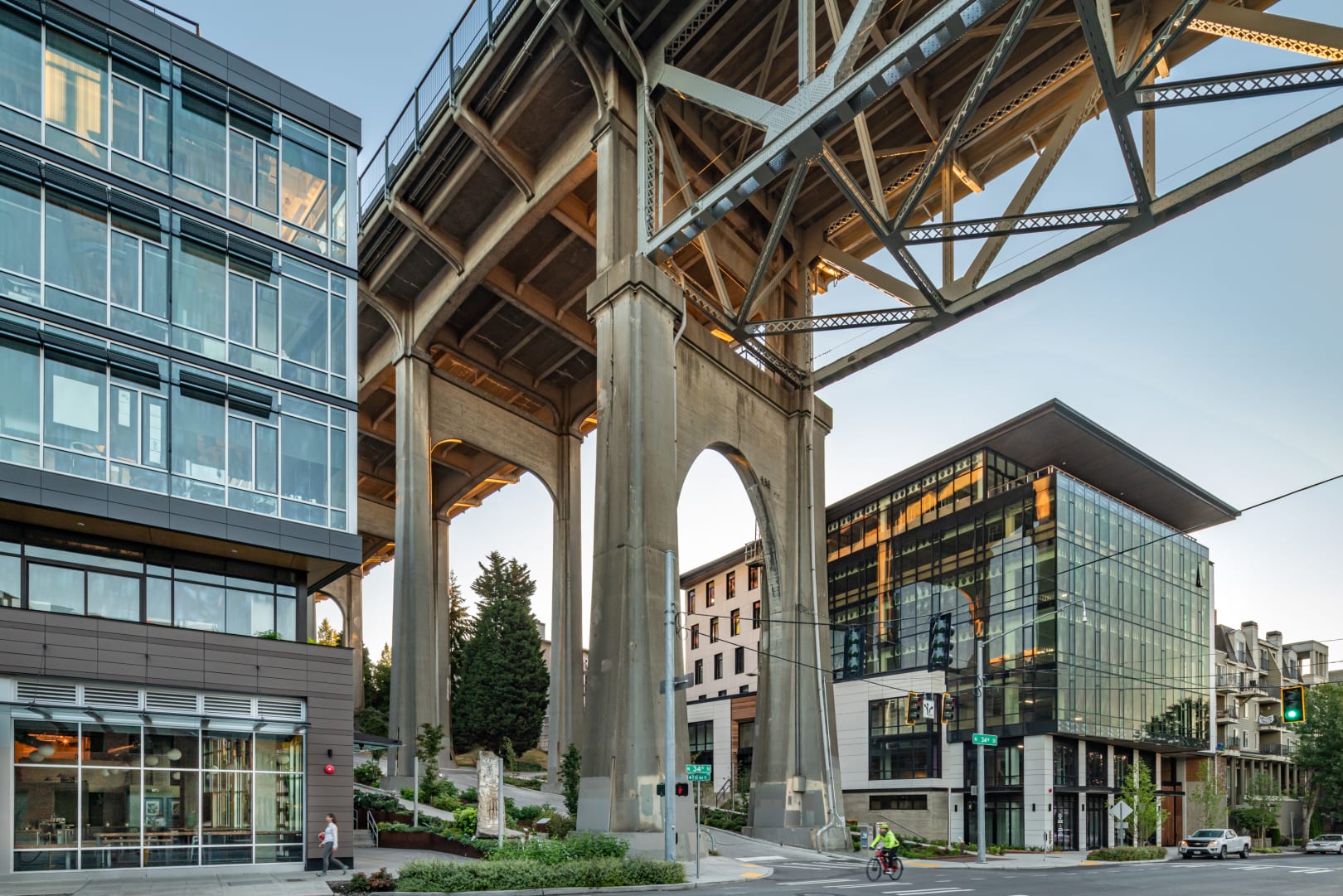
As one of the few buildings enrolled in Seattle’s Living Building Pilot Program, this building looks to move beyond incremental changes to achieve a better environment. Watershed is a regenerative seven-story office building making a profound positive effect on Seattle’s waterways, which suffer from a significant stormwater runoff problem that is affecting wildlife. Through strategies such as a series of bioswales that step down the site’s hillside, the building cleans more than 400,000 gallons of highly polluted water before it drains into nearby Lake Union. Inside its lobby, which is open to the public, visitors and tenants are kept informed of Watershed’s high performance through a digital dashboard, regular reports, and tours. Read more on this project. Photo: Built Work Photography
Westwood Hills Nature Center, St. Louis Park, Minn. | HGA Architects and Engineers
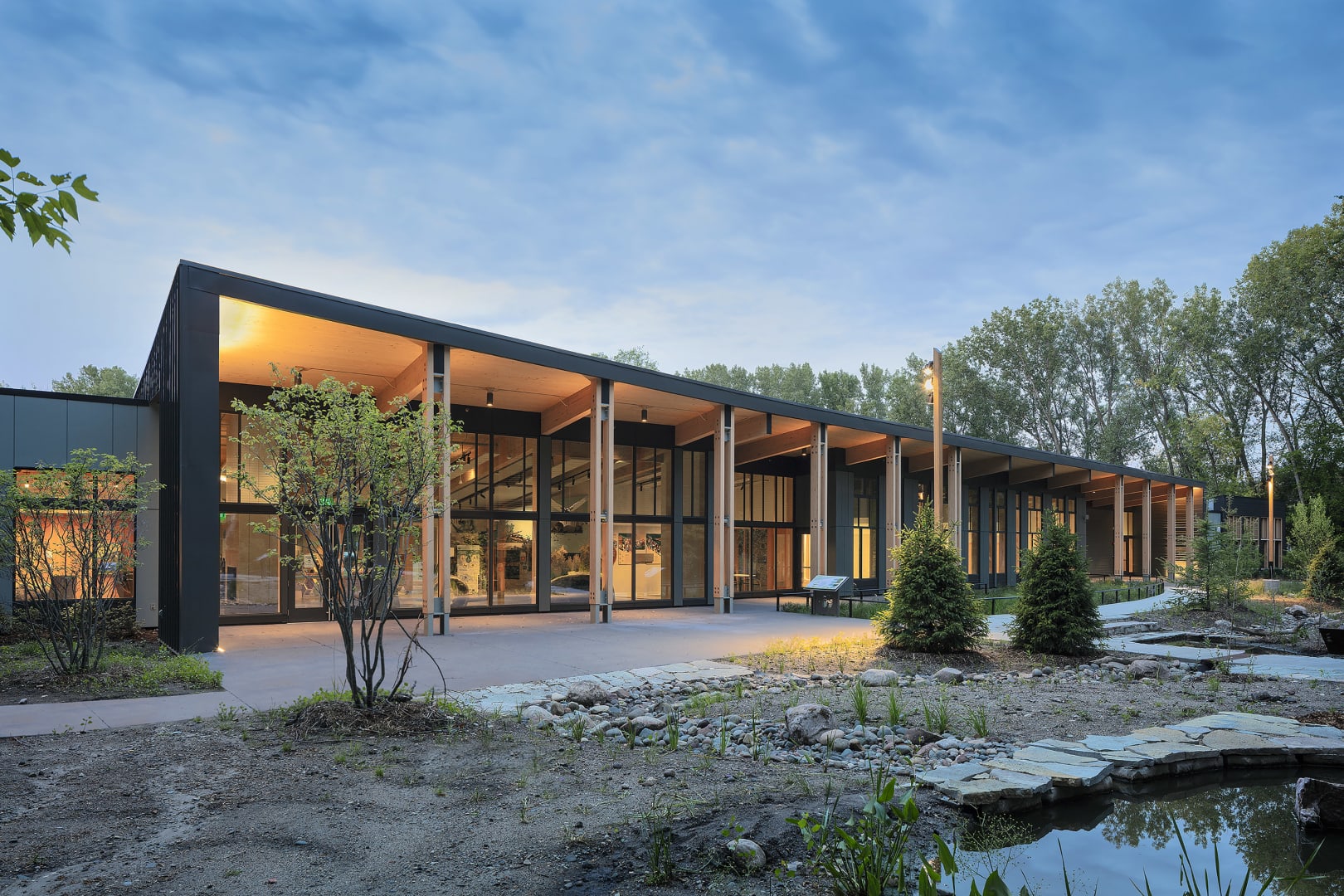
A new interpretive and accessible gateway to nature for the city of St. Louis Park, Minnesota, the Westwood Hills Nature Center immerses visitors in the surrounding forest full of birdsong and gentle breezes. Its design draws inspiration from the site with an exterior skin that evokes tree bark and a combination of fiber cement panels and window assemblies that subdivide and branch, much like the surrounding trees. The result of a vital partnership that included the design team, civic leaders, exhibit design specialists, and educators, the center is a true teaching tool and a vibrant amenity shaped by the city’s forward-thinking climate action plan that strives to achieve net zero by 2040. Read more on this project. Photo: Peter J. Sieger
Read more about the 2023 COTE Top Ten Awards winners
See past COTE Top Ten Awards winners:
Related Stories
Giants 400 | Aug 22, 2023
Top 175 Architecture Firms for 2023
Gensler, HKS, Perkins&Will, Corgan, and Perkins Eastman top the rankings of the nation's largest architecture firms for nonresidential building and multifamily housing work, as reported in Building Design+Construction's 2023 Giants 400 Report.
Performing Arts Centers | Jul 18, 2023
Perelman Performing Arts Center will soon open at Ground Zero
In September, New York City will open a new performing arts center in Lower Manhattan, two decades after the master plan for Ground Zero called for a cultural component there. At a cost of $500 million, including $130 million donated by former mayor Michael R. Bloomberg, the Perelman Performing Arts Center (dubbed PAC NYC) is a 138-foot-tall cube-shaped building that glows at night.
Standards | Jun 26, 2023
New Wi-Fi standard boosts indoor navigation, tracking accuracy in buildings
The recently released Wi-Fi standard, IEEE 802.11az enables more refined and accurate indoor location capabilities. As technology manufacturers incorporate the new standard in various devices, it will enable buildings, including malls, arenas, and stadiums, to provide new wayfinding and tracking features.
Engineers | Jun 14, 2023
The high cost of low maintenance
Walter P Moore’s Javier Balma, PhD, PE, SE, and Webb Wright, PE, identify the primary causes of engineering failures, define proactive versus reactive maintenance, recognize the reasons for deferred maintenance, and identify the financial and safety risks related to deferred maintenance.
Museums | Jun 6, 2023
New wing of Natural History Museums of Los Angeles to be a destination and portal
NHM Commons, a new wing and community hub under construction at The Natural History Museums (NHM) of Los Angeles County, was designed to be both a destination and a portal into the building and to the surrounding grounds.
Performing Arts Centers | Jun 6, 2023
Mumbai, India’s new Nita Mukesh Ambani Cultural Centre has three performing arts venues
In Mumbai, India, the recently completed Nita Mukesh Ambani Cultural Centre (NMACC) will showcase music, theater, and fine arts from India and from across the globe. Atlanta’s TVS Design served as the principal architect and interior designer of both the cultural center and the larger, adjacent Jio World Centre.
Architects | Jun 6, 2023
Taking storytelling to a new level in building design, with Gensler's Bob Weis and Andy Cohen
Bob Weis, formerly the head of Disney Imagineering, was recently hired by Gensler as its Global Immersive Experience Design Leader. He joins the firm's co-CEO Andy Cohen to discuss how Gensler will focus on storytelling to connect people to its projects.
Urban Planning | Apr 12, 2023
Watch: Trends in urban design for 2023, with James Corner Field Operations
Isabel Castilla, a Principal Designer with the landscape architecture firm James Corner Field Operations, discusses recent changes in clients' priorities about urban design, with a focus on her firm's recent projects.
Architects | Apr 6, 2023
Design for belonging: An introduction to inclusive design
The foundation of modern, formalized inclusive design can be traced back to the Americans with Disabilities Act (ADA) in 1990. The movement has developed beyond the simple rules outlined by ADA regulations resulting in features like mothers’ rooms, prayer rooms, and inclusive restrooms.
Sustainability | Apr 4, 2023
NIBS report: Decarbonizing the U.S. building sector will require massive, coordinated effort
Decarbonizing the building sector will require a massive, strategic, and coordinated effort by the public and private sectors, according to a report by the National Institute of Building Sciences (NIBS).

















